Schedule
Sugarcane Crop Schedule
| Product Name | Fertilizers | |||||||||
|---|---|---|---|---|---|---|---|---|---|---|
| PROM/Organic Fertilizer |
Poornima Kit | NPK Grow Caps |
Aceto | Alp | Sonha-Bihan | Humigrow Neno Powder |
Amavasya Kit | IBP Kit | ||
| Gluconacetobacter | Chelated Multi-micronutrient |
PGP/PGR | Humic substance | |||||||
| Land Reparation | Month -2 | |||||||||
| Soil Treatment | Month -1 | 50kg | ||||||||
| Before Seed Sowing | Month 0 | 1 Kit | ||||||||
| Germination | Month 1 | 1 Kit | ||||||||
| Vegetative Growth | Month 2 | |||||||||
| Month 3 | 1 Caps | 1 Caps | 120gm | |||||||
| Month 4 | ||||||||||
| Month 5 | 1 Kit | |||||||||
| Month 6 | 1 Kit | |||||||||
| Month 7 | 50kg | 1 Caps | 1 Caps | 120gm | ||||||
| Month 8 | 250gm | 250gm | ||||||||
| Month 9 | 1 Kit | |||||||||
| Month 10 | ||||||||||
| Month 11 | ||||||||||
| Month 12 | ||||||||||
| HARVESTING | ||||||||||
| Total Quantity | 100kg | 3 Kits | 2 Caps | 2 Caps | 250gm | 250gm | 240gm | 1 Kit | 1 Kit | |
| Broadcast | |
| Top Dressing | |
| Basal Dressing | |
| Soil Application | |
| Spray | |
| * | Optional |
NOTE: For the first year donot immidietaly substitute 100% chemical fertilizer with the SIESTO GREEN products, as the soil is used to chemical fertilizer, it may affect the output. So the best way to substitute is by reducing 50% of chemical input in the first year, 25% the following 2nd year, & then another 10% by the 3rd year. After the 3rd year use synthetic fertilizer / inorganic fertilizer if their is a requirement depending on the soil health.
CROP SCHEDULE FOR SUGARCANE
Sr. No.
Treatment / Application
Product
Dose /Acre
APPLICATION
Management
1
Vegetative – Dissolve in 20 to 200 ltr. of water as required for 1 acre of land and apply through Drip Irrigation or drench.
POORNIMA KIT
1 KIT
Apply it in Month 1, month 5, month 9
It is a balanced form of nutrients that includes NPK, Zinc, Cropforce NP, Humigrow NP, and Mycorrhiza NP
2
Dissolve in required amount of water required for 1 acre of land and apply through Drip Irrigation or drench
NPK Cap + Aceto Cap
1 cap
Apply in month 3, and month 7
It is a Gluconacetobacter which is a Nitrogen-Fixing Bacteria and also enhances sweetness in sugarcane.
3
Flowering/ Fruiting – Mix both in 20 – 200 liters of water as per requirement and spray it in the plants.
ALP + Sonhabihan
250gm + 250gm/200 lit. of water
Apply in month 8
It is a Micronutrient and PGP that helps in Growth, Fruit set, and the quality of the produce.
4
Vegetative and Flowering/ Fruiting – Mix all with the required amount of water and apply through foliar spray or drenching as per infestation of insect.
Amavasya kit
1 KIT
Apply in month 6
It is a balanced form of insecticides. Which include Traps, lifeline, Bt, Acarida, and Meta capsules.
5
Soil Treatment – Dissolve in 2 – 5 liters of water as per requirement for 1 acre of land and spray on the soil, or mix it with soil, FYM, or any sort of organic fertilizer and broadcast it to the field.
IBP KIT
1 KIT
Apply it as soil treatment before sowing/transplanting.
It prevents soil-born diseases and nematodes. Apply as per the soil health and soil-born diseases.
PEST ATTACKS, BACTERIAL, OR FUNGAL MANAGEMENT
PEST / BACTERIAL / FUNGAL
IDENTIFICATION IN CROP
SYMPTOMS
SUGGESTED PRODUCT
Red Rot
 The spindle leaves (3rd & 14th)) display drying. At a later stage, stalks become discolored and hollow.
Indofa + Bacillus
Wilt
The spindle leaves (3rd & 14th)) display drying. At a later stage, stalks become discolored and hollow.
Indofa + Bacillus
Wilt
 Internally light to dark purplish or brown discoloration of ground tissue, pithiness, and boat-shaped cavities in the middle of the internodes
Indofa + Bacillus + Lifeline
Smut
Internally light to dark purplish or brown discoloration of ground tissue, pithiness, and boat-shaped cavities in the middle of the internodes
Indofa + Bacillus + Lifeline
Smut
 Production of the whip-like structure of 25 – 150 cm. from the growing point of the canes.
Indofa + Bacillus
Rust
Production of the whip-like structure of 25 – 150 cm. from the growing point of the canes.
Indofa + Bacillus
Rust
 The earliest symptoms of common rust on the leaves are small, elongated yellowish spots that are visible on both surfaces.
Indofa + Bacillus
Shoot Borer
The earliest symptoms of common rust on the leaves are small, elongated yellowish spots that are visible on both surfaces.
Indofa + Bacillus
Shoot Borer
 Dead heart in a 1-3-month-old crop, which can be easily pulled out, a rotten portion of the straw-colored dead – heart emits an offensive odor.
Meta + Traps + BT
Internode Borer
Dead heart in a 1-3-month-old crop, which can be easily pulled out, a rotten portion of the straw-colored dead – heart emits an offensive odor.
Meta + Traps + BT
Internode Borer
 Internodes constricted and shortened with a number of boreholes and frass in the nodal region
Meta + Traps + BT
Top Shoot Borer
Internodes constricted and shortened with a number of boreholes and frass in the nodal region
Meta + Traps + BT
Top Shoot Borer
 A dead heart arises after the sixth month grown up canes, which cannot be easily pulled. A parallel row of shot holes in the emerging leaves
Meta + Traps + BT
Termites
A dead heart arises after the sixth month grown up canes, which cannot be easily pulled. A parallel row of shot holes in the emerging leaves
Meta + Traps + BT
Termites
 The entire shoot dries up and can be pulled out easily. Setts hollow inside and may be filled with soil
Traps + Metarhizium
White wooly Aphid
The entire shoot dries up and can be pulled out easily. Setts hollow inside and may be filled with soil
Traps + Metarhizium
White wooly Aphid
 Adults and nymphs suck sap from leaves by piercing styles through stomata. Whitish patches – coalesce and turn yellowish then drying starts from the tip along the margins.
Lifeline + Traps +Meta + BT
Mealybug
Adults and nymphs suck sap from leaves by piercing styles through stomata. Whitish patches – coalesce and turn yellowish then drying starts from the tip along the margins.
Lifeline + Traps +Meta + BT
Mealybug
 Pinkish oval insects beneath leaf sheath on the nodes, with whitish mealy coating, main cane stunned also attack roots.
BT + Traps + Lifeline
Nematode
Pinkish oval insects beneath leaf sheath on the nodes, with whitish mealy coating, main cane stunned also attack roots.
BT + Traps + Lifeline
Nematode
 Stunting of the crop, reduction in number and size of internodes. Roots are stubby and spare. The affected field shows pale green to whitish look.
Meta + BT + Pacliq
Stunting of the crop, reduction in number and size of internodes. Roots are stubby and spare. The affected field shows pale green to whitish look.
Meta + BT + Pacliq
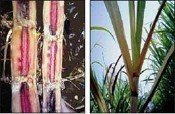 The spindle leaves (3rd & 14th)) display drying. At a later stage, stalks become discolored and hollow.
Indofa + Bacillus
Wilt
The spindle leaves (3rd & 14th)) display drying. At a later stage, stalks become discolored and hollow.
Indofa + Bacillus
Wilt
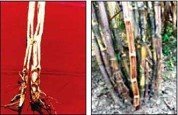 Internally light to dark purplish or brown discoloration of ground tissue, pithiness, and boat-shaped cavities in the middle of the internodes
Indofa + Bacillus + Lifeline
Smut
Internally light to dark purplish or brown discoloration of ground tissue, pithiness, and boat-shaped cavities in the middle of the internodes
Indofa + Bacillus + Lifeline
Smut
 Production of the whip-like structure of 25 – 150 cm. from the growing point of the canes.
Indofa + Bacillus
Rust
Production of the whip-like structure of 25 – 150 cm. from the growing point of the canes.
Indofa + Bacillus
Rust
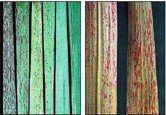 The earliest symptoms of common rust on the leaves are small, elongated yellowish spots that are visible on both surfaces.
Indofa + Bacillus
Shoot Borer
The earliest symptoms of common rust on the leaves are small, elongated yellowish spots that are visible on both surfaces.
Indofa + Bacillus
Shoot Borer
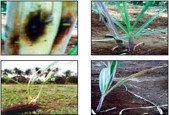 Dead heart in a 1-3-month-old crop, which can be easily pulled out, a rotten portion of the straw-colored dead – heart emits an offensive odor.
Meta + Traps + BT
Internode Borer
Dead heart in a 1-3-month-old crop, which can be easily pulled out, a rotten portion of the straw-colored dead – heart emits an offensive odor.
Meta + Traps + BT
Internode Borer
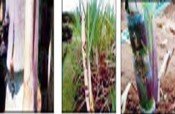 Internodes constricted and shortened with a number of boreholes and frass in the nodal region
Meta + Traps + BT
Top Shoot Borer
Internodes constricted and shortened with a number of boreholes and frass in the nodal region
Meta + Traps + BT
Top Shoot Borer
 A dead heart arises after the sixth month grown up canes, which cannot be easily pulled. A parallel row of shot holes in the emerging leaves
Meta + Traps + BT
Termites
A dead heart arises after the sixth month grown up canes, which cannot be easily pulled. A parallel row of shot holes in the emerging leaves
Meta + Traps + BT
Termites
 The entire shoot dries up and can be pulled out easily. Setts hollow inside and may be filled with soil
Traps + Metarhizium
White wooly Aphid
The entire shoot dries up and can be pulled out easily. Setts hollow inside and may be filled with soil
Traps + Metarhizium
White wooly Aphid
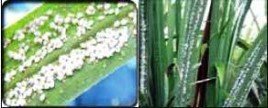 Adults and nymphs suck sap from leaves by piercing styles through stomata. Whitish patches – coalesce and turn yellowish then drying starts from the tip along the margins.
Lifeline + Traps +Meta + BT
Mealybug
Adults and nymphs suck sap from leaves by piercing styles through stomata. Whitish patches – coalesce and turn yellowish then drying starts from the tip along the margins.
Lifeline + Traps +Meta + BT
Mealybug
 Pinkish oval insects beneath leaf sheath on the nodes, with whitish mealy coating, main cane stunned also attack roots.
BT + Traps + Lifeline
Nematode
Pinkish oval insects beneath leaf sheath on the nodes, with whitish mealy coating, main cane stunned also attack roots.
BT + Traps + Lifeline
Nematode
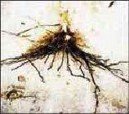 Stunting of the crop, reduction in number and size of internodes. Roots are stubby and spare. The affected field shows pale green to whitish look.
Meta + BT + Pacliq
Stunting of the crop, reduction in number and size of internodes. Roots are stubby and spare. The affected field shows pale green to whitish look.
Meta + BT + Pacliq
NUTRITION DEFICIENCY
NUTRIENT
IDENTIFICATION
SYMPTOMS
SUGGESTED PRODUCT
Nitrogen Deficiency
 Dieback of older leaves. Leaf blades turn light green to yellow. Short and slender stalks. Tips and margins of older leaves become necrotic.
Azoss Caps
Phosphorus
Dieback of older leaves. Leaf blades turn light green to yellow. Short and slender stalks. Tips and margins of older leaves become necrotic.
Azoss Caps
Phosphorus
 Red and purple discoloration of tips and margins, Slender leaves. Short and slender stalks. Poor or no tillering.
PSB Plus Caps
Potassium
Red and purple discoloration of tips and margins, Slender leaves. Short and slender stalks. Poor or no tillering.
PSB Plus Caps
Potassium
 Yellow-orange chlorosis of leaf borders & tips. Stalks slender.
Potash Grow Caps
Boron
Yellow-orange chlorosis of leaf borders & tips. Stalks slender.
Potash Grow Caps
Boron
 Distorted leaves. Formation of translucent lesions or water sacks along leaf margins. Brittle and bunched with many tillers. Death of apical meristem.
Alp
Sulfur
Distorted leaves. Formation of translucent lesions or water sacks along leaf margins. Brittle and bunched with many tillers. Death of apical meristem.
Alp
Sulfur
 Chlorotic young leaves. Narrower and shorter leaves with a faint purplish tinge. Slender stalks.
Sulphur Caps
Iron
Chlorotic young leaves. Narrower and shorter leaves with a faint purplish tinge. Slender stalks.
Sulphur Caps
Iron
 Varying degrees of chlorosis. Interveinal chlorosis from tip to the base of leaves.
Alp
Copper
Varying degrees of chlorosis. Interveinal chlorosis from tip to the base of leaves.
Alp
Copper
 Green splotches with leaves eventually showing bleaching. Stalk and meristems lack turgidity. Reduced inter-nodal length and tillering.
Alp
Zinc
Green splotches with leaves eventually showing bleaching. Stalk and meristems lack turgidity. Reduced inter-nodal length and tillering.
Alp
Zinc
 Midrib and leaf margin remain green and yellowing of leaf blade. Red lesions on leaves. Reduced tillering and shorter internodes.
Zinc Grow Caps
Manganese
Midrib and leaf margin remain green and yellowing of leaf blade. Red lesions on leaves. Reduced tillering and shorter internodes.
Zinc Grow Caps
Manganese
 Occurrence of interveinal chlorosis from the leaf tip towards the middle of the leaf. Bleaching of leaves under severe deficiency.
Alp
Molybdenum
Occurrence of interveinal chlorosis from the leaf tip towards the middle of the leaf. Bleaching of leaves under severe deficiency.
Alp
Molybdenum
 Short longitudinal chlorotic streaks on the top one-third of the leaf. Short and slender stalks. Slow vegetative growth.
Alp
Short longitudinal chlorotic streaks on the top one-third of the leaf. Short and slender stalks. Slow vegetative growth.
Alp
 Dieback of older leaves. Leaf blades turn light green to yellow. Short and slender stalks. Tips and margins of older leaves become necrotic.
Azoss Caps
Phosphorus
Dieback of older leaves. Leaf blades turn light green to yellow. Short and slender stalks. Tips and margins of older leaves become necrotic.
Azoss Caps
Phosphorus
 Red and purple discoloration of tips and margins, Slender leaves. Short and slender stalks. Poor or no tillering.
PSB Plus Caps
Potassium
Red and purple discoloration of tips and margins, Slender leaves. Short and slender stalks. Poor or no tillering.
PSB Plus Caps
Potassium
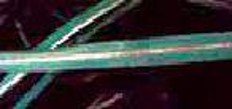 Yellow-orange chlorosis of leaf borders & tips. Stalks slender.
Potash Grow Caps
Boron
Yellow-orange chlorosis of leaf borders & tips. Stalks slender.
Potash Grow Caps
Boron
 Distorted leaves. Formation of translucent lesions or water sacks along leaf margins. Brittle and bunched with many tillers. Death of apical meristem.
Alp
Sulfur
Distorted leaves. Formation of translucent lesions or water sacks along leaf margins. Brittle and bunched with many tillers. Death of apical meristem.
Alp
Sulfur
 Chlorotic young leaves. Narrower and shorter leaves with a faint purplish tinge. Slender stalks.
Sulphur Caps
Iron
Chlorotic young leaves. Narrower and shorter leaves with a faint purplish tinge. Slender stalks.
Sulphur Caps
Iron
 Varying degrees of chlorosis. Interveinal chlorosis from tip to the base of leaves.
Alp
Copper
Varying degrees of chlorosis. Interveinal chlorosis from tip to the base of leaves.
Alp
Copper
 Green splotches with leaves eventually showing bleaching. Stalk and meristems lack turgidity. Reduced inter-nodal length and tillering.
Alp
Zinc
Green splotches with leaves eventually showing bleaching. Stalk and meristems lack turgidity. Reduced inter-nodal length and tillering.
Alp
Zinc
 Midrib and leaf margin remain green and yellowing of leaf blade. Red lesions on leaves. Reduced tillering and shorter internodes.
Zinc Grow Caps
Manganese
Midrib and leaf margin remain green and yellowing of leaf blade. Red lesions on leaves. Reduced tillering and shorter internodes.
Zinc Grow Caps
Manganese
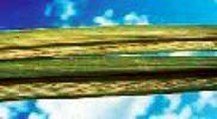 Occurrence of interveinal chlorosis from the leaf tip towards the middle of the leaf. Bleaching of leaves under severe deficiency.
Alp
Molybdenum
Occurrence of interveinal chlorosis from the leaf tip towards the middle of the leaf. Bleaching of leaves under severe deficiency.
Alp
Molybdenum
 Short longitudinal chlorotic streaks on the top one-third of the leaf. Short and slender stalks. Slow vegetative growth.
Alp
Short longitudinal chlorotic streaks on the top one-third of the leaf. Short and slender stalks. Slow vegetative growth.
Alp


